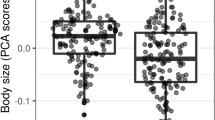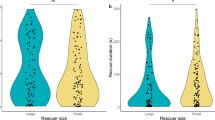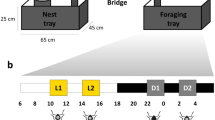Abstract
DURING experiments on the foraging methods of the ant Monomorium pharaonis (L.) in Nigeria, a well-defined response of worker ants to the dead bodies of workers of their own species has been observed. When some of the workers returning to their nest after feeding at a bait were killed by crushing, the passage of ants to and from the bait was interrupted at the place where the crushed ant lay. A worker ant, whether moving on a trail or searching for food independently, which encountered the crushed body of another worker, stopped sharply about 1 cm. from the body, and after a brief antennal palpation of the air towards the body or of the body itself, turned and ran away. The response was to the body and not to the act of crushing or to the experimenter's fingers, as the body of an ant crushed elsewhere and placed in a trail with forceps produced the same effect. The actual presence of the body is not necessary, as the same response was obtained at the point where a body had been laid and afterwards removed (Table 1). The response was observed equally when the body of a worker from a different colony of M. pharaonis was used. The freshly crushed bodies of some other species of ant are, however, treated as food.
This is a preview of subscription content, access via your institution
Access options
Subscribe to this journal
Receive 51 print issues and online access
$199.00 per year
only $3.90 per issue
Buy this article
- Purchase on SpringerLink
- Instant access to full article PDF
Prices may be subject to local taxes which are calculated during checkout
Similar content being viewed by others
References
McGregor, E. G., Behaviour, 1, 267 (1948). Rabaud, E., “How Animals find their way About” (Kegan Paul, London, 1928).
Mallis, A., “Handbook of Pest-Control” (Macnair-Dorland Co., 1954).
Author information
Authors and Affiliations
Rights and permissions
About this article
Cite this article
SUDD, J. A Response of Worker Ants to Dead Ants of their own Species. Nature 179, 431–432 (1957). https://doi.org/10.1038/179431a0
Issue date:
DOI: https://doi.org/10.1038/179431a0



